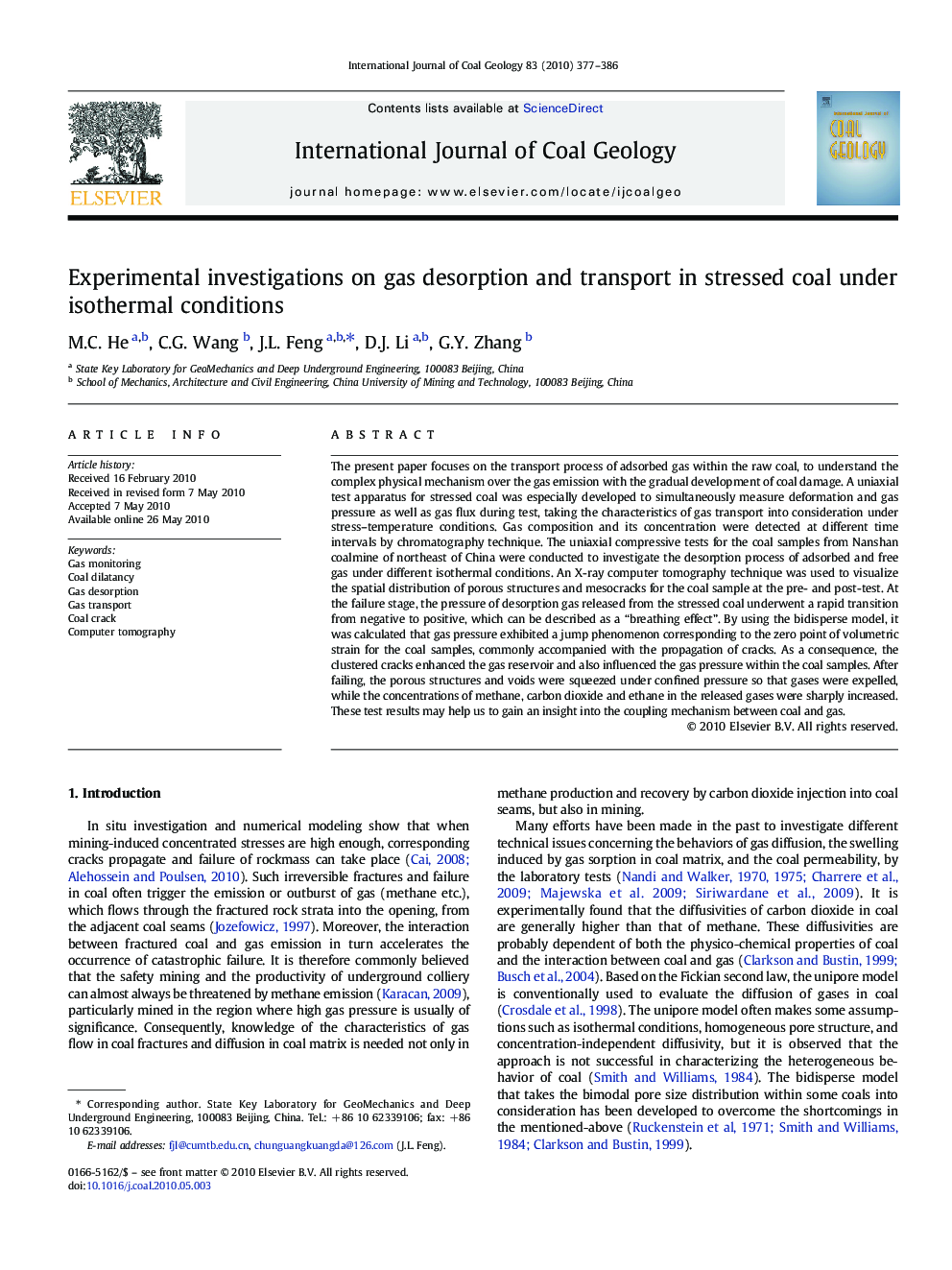| Article ID | Journal | Published Year | Pages | File Type |
|---|---|---|---|---|
| 1753737 | International Journal of Coal Geology | 2010 | 10 Pages |
The present paper focuses on the transport process of adsorbed gas within the raw coal, to understand the complex physical mechanism over the gas emission with the gradual development of coal damage. A uniaxial test apparatus for stressed coal was especially developed to simultaneously measure deformation and gas pressure as well as gas flux during test, taking the characteristics of gas transport into consideration under stress–temperature conditions. Gas composition and its concentration were detected at different time intervals by chromatography technique. The uniaxial compressive tests for the coal samples from Nanshan coalmine of northeast of China were conducted to investigate the desorption process of adsorbed and free gas under different isothermal conditions. An X-ray computer tomography technique was used to visualize the spatial distribution of porous structures and mesocracks for the coal sample at the pre- and post-test. At the failure stage, the pressure of desorption gas released from the stressed coal underwent a rapid transition from negative to positive, which can be described as a “breathing effect”. By using the bidisperse model, it was calculated that gas pressure exhibited a jump phenomenon corresponding to the zero point of volumetric strain for the coal samples, commonly accompanied with the propagation of cracks. As a consequence, the clustered cracks enhanced the gas reservoir and also influenced the gas pressure within the coal samples. After failing, the porous structures and voids were squeezed under confined pressure so that gases were expelled, while the concentrations of methane, carbon dioxide and ethane in the released gases were sharply increased. These test results may help us to gain an insight into the coupling mechanism between coal and gas.
